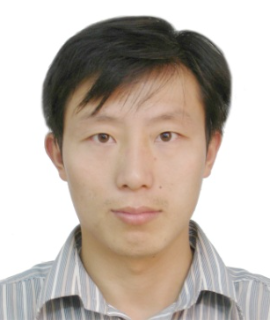Title : Pycnoporus laccase production, properties, and its novel application
Abstract:
Many eco-friendly enzymes have been used in industries to promote cleaner production via enzymatic processes. Laccase (EC 1.10.3.2) is a very useful green catalyst for industrial, environmental, and medical applications due to its diverse capability in converting a wide range of substrates through catabolic or anabolic reactions As such, a rapid growth in the demand of laccase is expected worldwide, and the gap between production and demand will enlarge. It is thus of practical significance to seek microbes as potent cell factories to produce laccase with high yield at low cost.
We isolated a wild-type fungus from a rotten wood in subtropical area in China and characterized it as Pycnoporus sp. SYBC-L3. Laccase production was raised up to 45 U/mL from its original value of 0.8 U/mL by optimizing several parameters under submerged cultivation in flask. Productivity of laccase was further examined in bioreactors at different scales and showed scalability. In a 50 L stirred reactor, the highest activity of 110 U/mL was achieved. Cultivation in 65 L airlift bioreactor gave rise to 72 U/mL at day 6. A 5 ton bioreactor produced 80 U/mL laccase. The laccase was purified and characterized. Results showed that it was a thermostable one with strong stability at room temperature. Secondary structure β-sheet plays a critical role in maintaining laccase activity. Powdered laccase can be prepared using spray drying technique with >74% activity recovered. The production cost was calculated to be very low, in which the highest percentage was labor (50%) followed by electricity (36%). By roughly calculating the cost in 65 L airlift bioreactor, $1 for per liter fermentation crude was needed, equaling 72000 U in total.
The current novel application of laccase is to alleviate soil water repellency (SWR). SWR is the phenomenon that the soil is hydrophobic and does not spontaneously wet. SWR is caused by the formation of hydrophobic organic coatings on soil particle surfaces. These organic coatings include waxes, fatty acids, lignin, plant root exudates, fungal hyphae/exudates, etc. SWR can lead to serious loss in crop production and turfgrass quality. Laccase and other several enzymes were found to be effective in alleviating SWR, which is usually determined using water drop penetration times (WDPT) which involves placement of a droplet of water on an soil sample surface, with the WDPT classes being: <5 s penetration time means very hydrophilic soil. After enzyme treatment, all repellent soils were found to be hydrophilic with WDPT reduced to <60s from 7439s. One day treatment was proved effective. Laccase also showed stability in soil over treatment period. Other enzymes like chitinase, protease, and pectinase were also observed with high efficiency.



